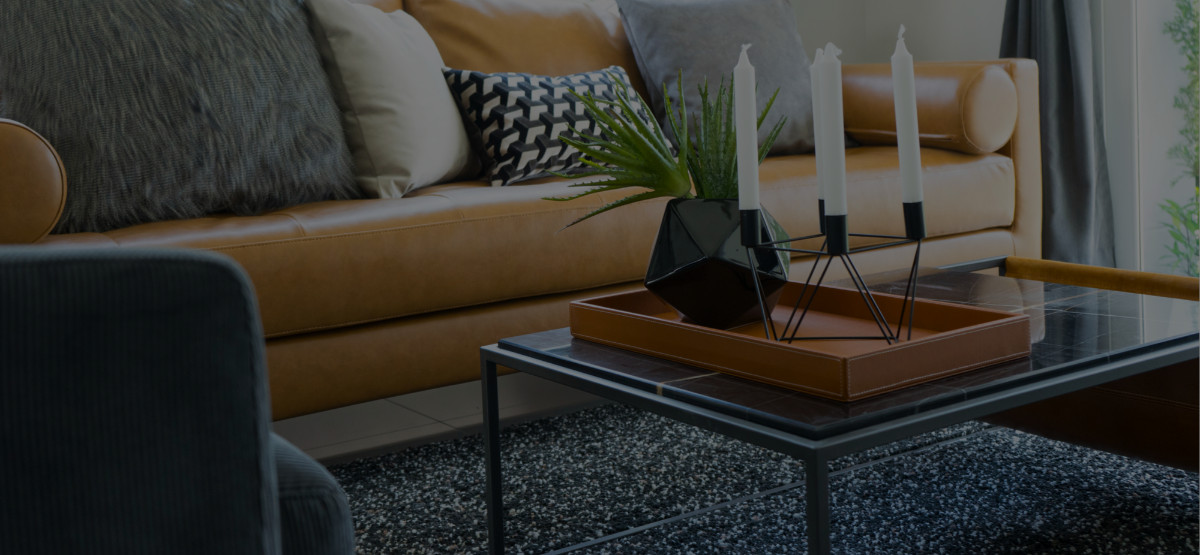A professional home stager can do wonders for a home’s sale speed and perceived value. Home stagers fill and/or arrange a home with furniture and décor items to show off a property’s best features. The goal is to make the place feel like home to anyone who walks through the door.
While some home stagers will rent their furniture to do a showcase (passing on the fees to the homeowners), others hold their own stock. They’ll buy furniture sets to stage all their clients’ homes and store them for later use after the property is sold.
Purchasing your own stock will invite a host of new responsibilities. Before jumping the gun and buying 3 sets of upholstered chairs, read through our guide to owning your own stock.
Pros and cons of holding your own stock!
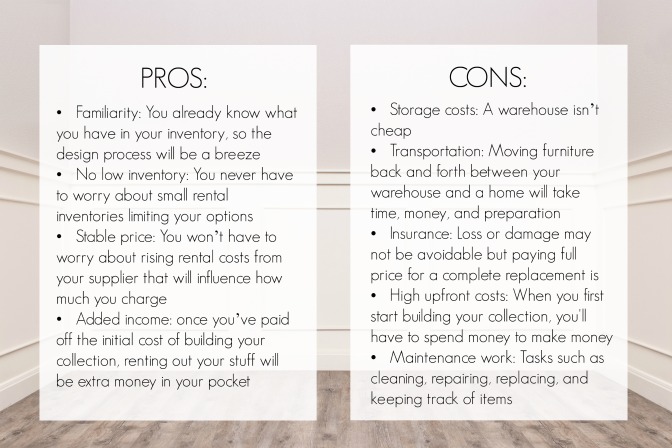
Establishing a staging furniture collection
Creating strong relationships with manufacturers is key. You’ll be buying multiple sets of staging items as your client list grows, so you’ll be returning over and over again. Your stock will constantly be moved around, so you can expect transportation damages and normal wear and tear to occur. Being a loyal customer can really pay off when you start negotiating discounts and deals.
With the changing market, it’s necessary to refresh your inventory every so often, but that doesn’t mean completely replacing everything. Purchasing classic pieces will give you versatility during the design process and will last longer in your inventory (this’ll save you more money in the long run!).
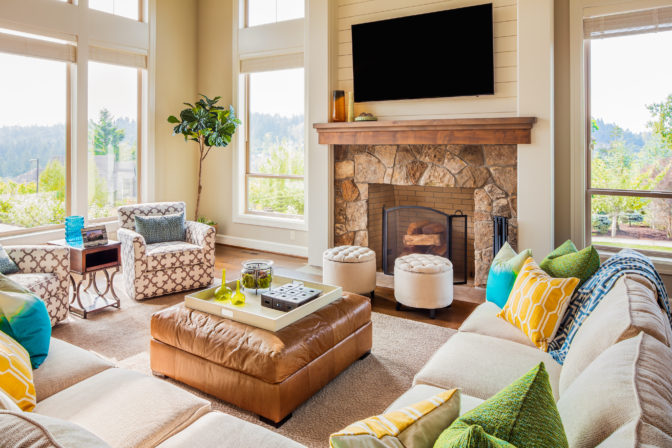
You should invest in neutral tones for your basic furniture pieces to highlight the space of the property without being too distracting or busy. Potential buyers have to be able to envision themselves living in the space. If you go for fad furniture or eccentric themes, you’ll risk alienating your buyer.
Be careful, though! You don’t want your client’s home to appear as drab as the waiting room of a doctor’s office. Splurge on some colorful patterns when picking up accessory items like pillows, rugs, and art to spice up the rooms. The idea is to create a space that’s attractive to as many people as possible.
If you’re on a tight budget, consider going thrifting at a flea market or garage sale to pick up unique items you can’t get anywhere else. Make sure the items are new or only require minor cleaning before you make the purchase. Another option is selling or trading your old items online for new ones. Krrb.com is a popular platform for local classifieds of one-of-a-kind items guaranteed to make your inventory stand out.
What type of insurance should you get?
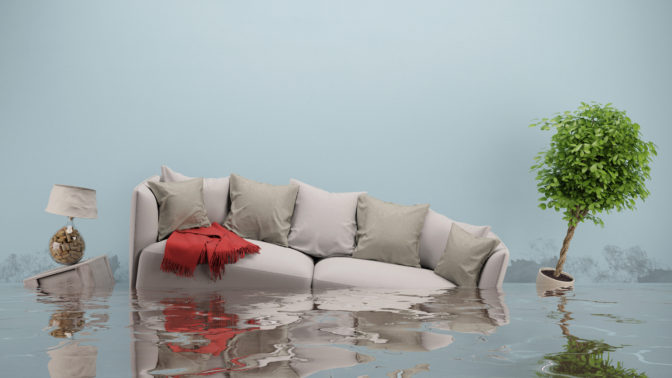
Insurance talk is never fun, but it’s totally worthwhile if your existing policies can cover your business needs. You’ll have to look into multiple insurance options to find the right fit for you, so don’t be afraid to talk to your insurance agent. In general, you should consider three types of insurance:
- Storage content insurance: To protect your goods from theft or damage when they’re in storage.
- Vehicular / transportation insurance: Whether it’s renting a moving vehicle or investing in your own moving van, insurance is a must! You’ll likely be hiring movers, so make sure they have liability insurance coverage as well.
- Professional liability insurance: To cover damage of your items or property damage to the home while you’re on the job. Especially as tradespeople may be involved in home staging, you can never predict what will happen with so many people milling about.
Where should you store your inventory?
There’s no denying that your storage options depend on the amount of stuff you have, but there are other criteria you should consider when selecting your space. You should factor in the security of the property, the climate of the space (cool and dry are ideal), and the ease of access to your inventory.

When you’re starting out, you’ll probably store your stock in your basement or garage. As your collection grows, you’ll find organizing and finding room to store your stuff to be difficult. At this point, people will turn to third-party storage facilities. Renting a storage locker will have additional security, climate regulation, and (likely) content insurance. If you find that you’re buying enough furniture and décor items to furnish several vacant homes at a time, upgrading to a warehouse is your best bet.
Keeping your inventory safe
Protecting your inventory goes beyond just having a sturdy lock for your storage locker. Carefully packing and storing your stuff can make all the difference. Here are some basic steps you can take to keep your inventory damage-free:
- Vapor barrier plastic: You can purchase this at a hardware store to lay down on concrete floors for humidity control.
- Dust covers/quilts: For preventing dust from settling on fabrics and for padding between stacked furniture to minimize scrapes.
- Place fabrics and soft items into waterproof storage bins. The sturdiness of plastic bins also helps with stacking, lifting, and moving.
- Mark “fragile” on items and wares that are breakable, especially when they are in stacked containers, so you know to be careful when maneuvering around the storage space.
- Pack fragile items in bubble wrap and stuff all open gaps with paper or other padding material so your items don’t rattle and chip.
- Tie bungee cords around shelves in case you accidentally knock into them while you’re rifling through your stuff. The last thing you need is a shattered vase on the ground.
Delivering and moving your staging inventory:
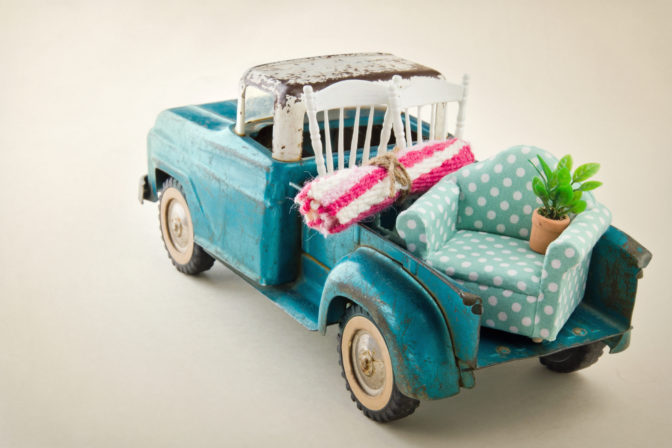
You’ll mainly be at risk of damaging your inventory during transportation. Let’s be honest: you likely won’t be filing insurance claims for small nicks you find on the face of a clock, so make sure your movers know to be careful when handling your furniture.
Don’t be afraid to splurge on furniture pads and blankets—they’re a home stager’s best friends! From protecting the corners of a desk to cushioning a mirror through transport, these moving accessories will help you make the most out of your furniture pieces.
How much can you charge for rentals?
Home stagers usually charge about 20% of the total retail price of all the items used on a monthly basis. Make sure you indicate to your clients that the rental fee is separate from your service fee. Alternatively, you can create furniture and décor packages with negotiable (but relatively consistent fees) for your clients. This method is best saved for when you’ve already recuperated retail costs for your inventory.

